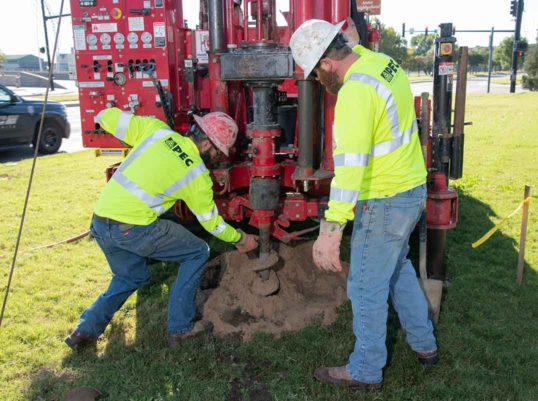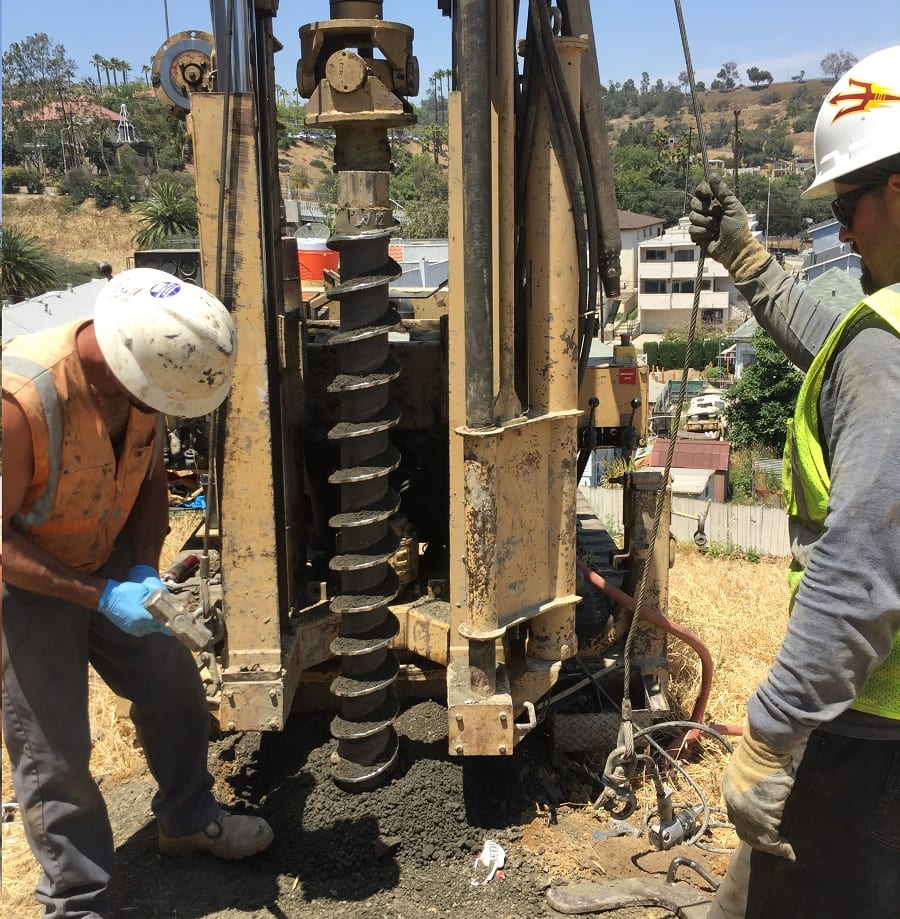Trends Influencing the Future of Geotechnical Eng Practices
Wiki Article
Understanding the Comprehensive Duty of Geotechnical Engineers in Ground Examination and Soil Evaluation for Building And Construction Tasks
Geotechnical designers are important to the success of building jobs, offering crucial understandings with extensive ground examinations and dirt analysis. Their proficiency in analyzing soil behavior and employing sophisticated testing methods educates important choices that promote architectural honesty and safety and security. By working together and identifying potential dangers with multidisciplinary groups, these experts significantly affect job end results, including effectiveness and cost-effectiveness. Nevertheless, the complexities of their role commonly extend past these functions, motivating a much deeper expedition into the methodologies they employ and the implications of their findings on overall task feasibility.Function of Geotechnical Designers
The pivotal duty of geotechnical designers in building and construction projects can not be overemphasized, as they offer important understandings right into soil behavior and website problems. These professionals are tasked with analyzing the viability of the ground for numerous sorts of structures, ensuring security and stability throughout the construction process. Their know-how includes a wide variety of activities, including site characterization, soil sampling, and laboratory testing, which are essential for determining the mechanical and physical buildings of the dirt.Geotechnical engineers use their searchings for to create foundational layouts that suit load-bearing needs and reduce threats connected to soil settlement, slope, and liquefaction security. They play an essential duty in identifying potential threats, such as groundwater changes and contamination, which can dramatically affect task feasibility. They collaborate with designers, civil designers, and specialists to make certain that geotechnical considerations are integrated right into the general style and building and construction stages.
Ground Examination Techniques
Ground investigation strategies form the backbone of geotechnical engineering, allowing designers to acquire a detailed understanding of subsurface conditions. These methods are important for evaluating dirt residential properties, establishing groundwater levels, and recognizing prospective geological threats.Usual techniques consist of borehole boring, which permits the extraction of soil examples at different midsts, supplying essential data for evaluation. In addition, in situ testing techniques, such as Conventional Penetration Examinations (SPT) and Cone Infiltration Examinations (CPT), are utilized to assess soil toughness and thickness straight in the ground.
Geophysical approaches also play a significant duty in ground examinations. Strategies such as seismic surveys and electric resistivity tomography help assess subsurface qualities without extensive excavation. geotechnical eng. These non-invasive techniques are specifically advantageous in big or sensitive areas where interruption need to be minimized
In addition, exploratory trenches can be dug deep into to aesthetically evaluate soil layers and determine any kind of abnormalities. Each of these strategies adds distinct insights, allowing geotechnical designers to establish accurate site analyses and inform design decisions. In summary, a combination of these ground examination techniques is crucial for successful building and construction projects, ensuring safety and security and structural stability.
Soil Analysis Techniques
Dirt evaluation approaches are critical for recognizing the chemical and physical residential properties of soil, which directly influence the layout and construction of structures and various other frameworks. Different techniques are utilized to assess dirt features, making certain that geotechnical engineers acquire exact information for educated decision-making.One typically made use of method is grain size analysis, which figures out the distribution of bit dimensions within a soil example. This is crucial for categorizing soil kinds and predicting their actions under lots. One more essential technique is Atterberg restrictions testing, which examines the plasticity and dampness material of fine-grained soils, providing understandings into their design homes.

Field examinations, such as Conventional Infiltration Tests (SPT) and Cone Penetration Tests (CPT), deal beneficial in-situ information pertaining to dirt strength and stratification. Jointly, these dirt evaluation techniques form the structure of geotechnical investigation, enabling designers to create safe and efficient frameworks customized to the certain problems of the website.
Risk Mitigation Approaches
Carrying out effective risk mitigation methods is vital for geotechnical designers to address potential obstacles in building jobs. These methods are crucial in identifying, examining, and managing dangers associated with dirt problems, website stability, and groundwater variations, which civil consulting engineers can detrimentally impact job outcomes.One primary approach includes conducting complete site examinations that make use of innovative geophysical methods and comprehensive soil tasting. By getting exact data on subsurface problems, designers can make educated decisions on layout and building and construction methods. In addition, employing predictive modeling tools permits for the simulation of different scenarios, enabling engineers to visualize prospective issues and implement safety nets.
Additionally, developing clear interaction networks amongst project stakeholders cultivates a collaborative method to take the chance of administration. Regular updates and examinations make sure that all celebrations are mindful of the advancing website problems and can adjust their methods accordingly.

Impact on Building And Construction Tasks
The efficiency of risk reduction strategies straight affects the total success of building and construction tasks. Geotechnical engineers play a crucial function in this domain name, as their expertise in ground examination and dirt analysis notifies essential choices throughout the building process. By precisely analyzing dirt problems and recognizing prospective threats, these specialists enable project groups to design reliable services that reduce risks connected with ground instability, water seepage, and various other geotechnical challenges.The influence of complete geotechnical analysis is noticeable in different facets of building and construction tasks, consisting of price management, job timelines, and architectural stability. Early identification of issues enables timely treatments, minimizing pricey delays and spending plan overruns. Moreover, a detailed understanding of site problems enhances the layout and engineering procedure, making sure that frameworks are constructed to hold up against environmental stress and possible natural catastrophes.
Inevitably, the contributions of geotechnical designers are indispensable to the successful execution of building projects. Their job not just promotes security and conformity with regulations yet additionally enhances the lasting sustainability of frameworks, making sure that they do efficiently throughout their designated lifespan. The cooperation in between geotechnical groups and various other stakeholders is essential for attaining optimum end results in construction undertakings.
Final Thought
In conclusion, geotechnical designers execute a critical feature in construction projects with detailed ground examinations and dirt analyses. Their experience in examining soil actions, utilizing numerous examination methods, and applying danger mitigation strategies substantially contributes to the structural integrity and safety of developed settings. By working together with multidisciplinary teams, these professionals enhance job efficiency and make certain conformity with security standards, eventually resulting in successful construction outcomes and lowered possible threats.Geotechnical designers are integral to the success of construction jobs, giving important understandings through extensive ground investigations and soil analysis.The essential function of geotechnical engineers in construction tasks can not be overstated, as they provide essential understandings right into soil habits and site problems. Their experience incorporates a large variety of tasks, consisting of site characterization, soil tasting, and lab screening, which are critical for figuring out the mechanical and physical buildings of the soil.
By accurately examining soil conditions and recognizing prospective dangers, these specialists make it possible for task teams to devise reliable solutions that minimize dangers associated with ground instability, water infiltration, and other geotechnical challenges.
In conclusion, geotechnical designers carry out a vital feature in construction tasks via thorough ground examinations and dirt evaluations.
Report this wiki page